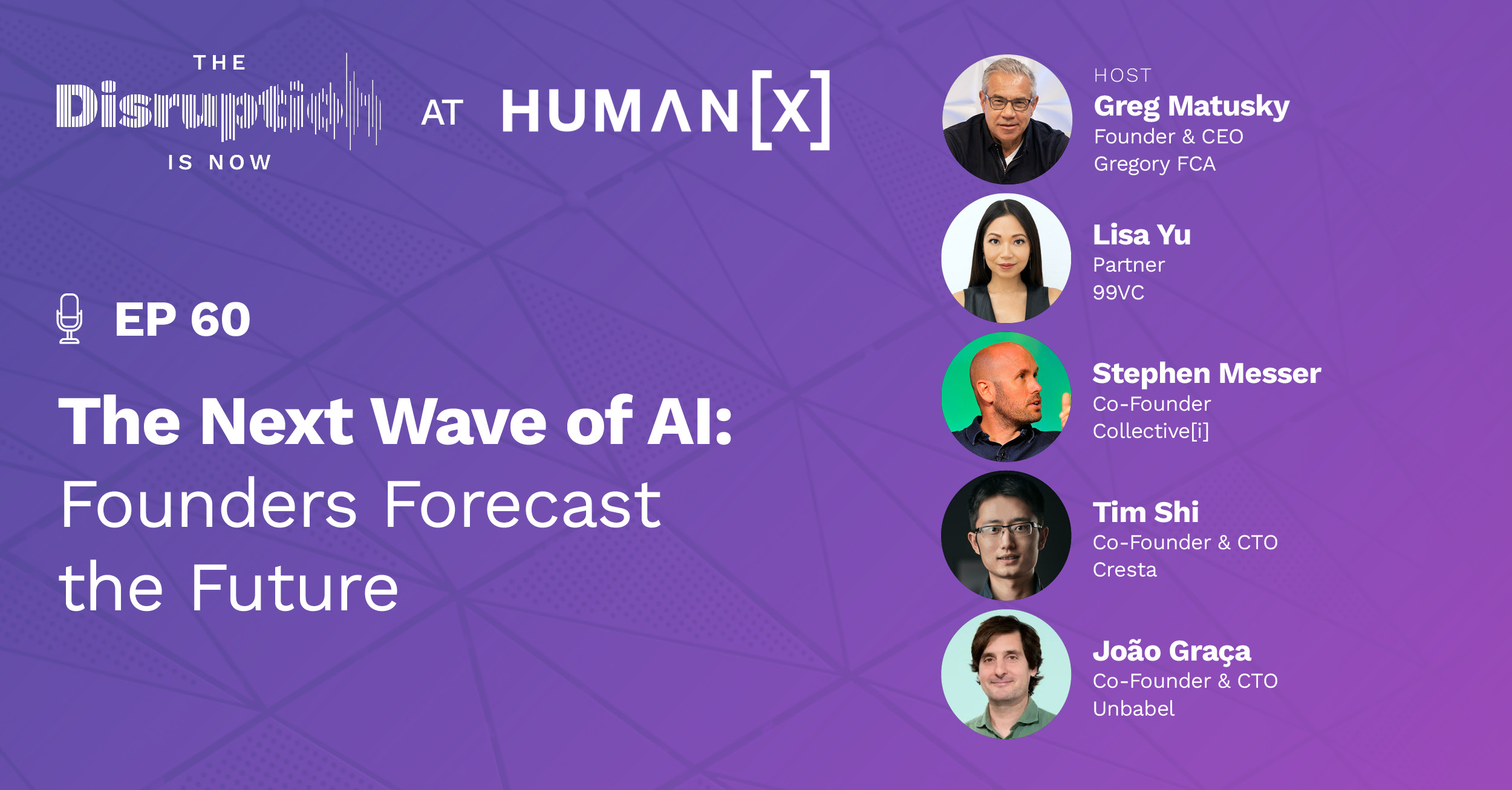A robot butler that folds your laundry. A neural net trained on 5% of the global economy. An AI-powered call center agent that sounds nearly human.
These are just some of the visions discussed at the HumanX conference, where host Greg Matusky took The Disruption Is Now for another special episode from the show floor. He sat down with four guests pushing generative AI far beyond text generation:
- Lisa Yu, Partner at 99VC
- Stephen Messer, Co-Founder of Collective[i]
- Tim Shi, Co-Founder and CTO of Cresta
- João Graça, Co-Founder and CTO of Unbabel
Each conversation reveals how AI is reshaping business in wildly different ways, from early-stage investing to call centers, economic forecasting to translation infrastructure.
Whether you’re a marketer, communicator, or strategist trying to understand where AI is headed, this episode is a snapshot of what’s being built next.
Watch now:
Key takeaways
Small models and specialized agents are the real future of AI
Lisa Yu says the era of general-purpose large language models is already winding down. The next wave is smarter and leaner, with smaller, domain-specific models trained on proprietary data.
Value won’t come from building the next ChatGPT clone, but from developing tools that solve real problems faster and cheaper. Her bets are on physical AI: robotics, drones, and autonomous systems built for the real world.
Lisa’s fund focuses on capital-efficient startups that can create billion-dollar businesses with just a handful of people. From home robotics to physical AI in logistics, her thesis is that practical, verticalized AI is what wins next.
AI is starting to see the economy more clearly than humans can
Stephen Messer is building what he calls an “economic foundation model” — a neural network trained on live business activity from over 5% of the global economy. Sales professionals become sensors feeding the model, which can then identify slowdowns, forecast trends, and suggest strategic changes before the market fully reacts.
Think of it like Waze, but for enterprise demand. If Waze can reroute traffic in real time, why can’t businesses reroute strategy based on real buyer behavior? It’s AI applied to economics, decision-making, and trust networks, with applications in everything from sales to government forecasting.
Call centers are the proving ground for AI-human collaboration
Since 2017, Cresta has built deep learning systems that assist human agents in real time, and now it’s leading the charge on voice-based AI agents that respond to customer needs with minimal lag and high accuracy.
Still, Tim Shi notes that fully replacing humans is still a ways off. He argues foundational models have hit a plateau, and progress now depends on integrating high-quality domain-specific data and training AI to navigate complex enterprise systems, a challenge that’s as organizational as it is technical.
Generative AI is changing translation from the inside out
João Graça has been breaking language barriers for over a decade, long before generative AI was a buzzword. He’s seen firsthand how translators went from fearing obsolescence to embracing AI as a productivity boost.
Now, Unbabel is launching its own LLM, Widn.ai, trained specifically for translation.
What began as crowd-sourced, mobile-enabled translation is now a full-stack platform powered by a custom large language model.
Designed specifically for translation tasks, Widn is fine-tuned using Unbabel’s deep data archive and quality estimation algorithms. João argues that while LLMs like GPT-4 have shown promise, true breakthrough performance in translation comes from tailored models, contextual data, and infrastructure built for speed, scale, and human-in-the-loop editing.
João sees language services as the canary in the AI coal mine, showing how human-AI collaboration can work at scale.
Key Moments in the Conversation
- Lisa Yu explains what makes a pre-seed AI founder stand out (1:36)
- Why small models are the next big thing (4:38)
- Lisa’s vision of physical AI in the home and workplace (5:13)
- Stephen Messer introduces the concept of an “economic foundation model” (12:04)
- How Collective[i] tracks 5% of global economic activity in real time (13:56)
- 3 applications for real-time demand forecasting using AI (16:18)
- Tim Shi breaks down why call centers are AI’s ideal use case (25:24)
- The real reason AI models plateaued (28:27)
- How far are we from automated call centers? (31:13)
- João Graça reveals how Unbabel began with subway gig work (36:32)
- Why professional translators embraced AI (46:49)
- What it took for Unbabel to build its own foundational model (49:29)

